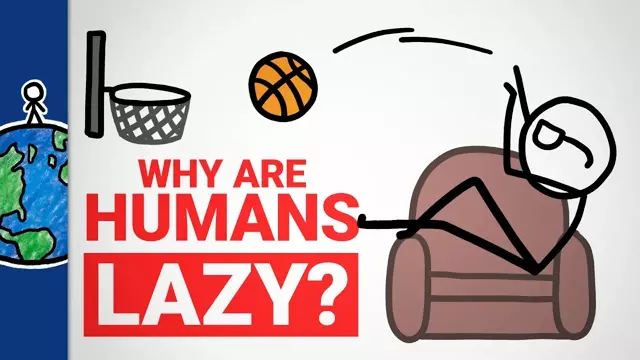2019-09-11
[public] 617K views, 20.1K likes, dislikes audio only
Thanks to the University of Minnesota for sponsoring this video! http://twin-cities.umn.edu/
Because exercise isn't essential for short-term survival, we don't exercise enough, so we need to reincorporate purposeful physical activity into our lives.
Thanks also to our Patreon patrons https://www.patreon.com/MinuteEarth and our YouTube members.
___________________________________________
To learn more, start your googling with these keywords:
Physical activity - any bodily movement produced by the contraction of skeletal muscle that increases energy expenditure above a basal level
Exercise - a form of physical activity that is planned, structured, repetitive, and performed (primarily) with the goal of improving health or fitness
Recommended levels of physical activity (USA) - 150 minutes moderate-intensity or 75 minutes vigorous-intensity aerobic physical activity per week, or an equivalent combination, and muscle-strengthening activities at least 2 days / week
Evolutionary medicine - a field that uses evolutionary theory & data to better understand (the origins of) health & disease
Mismatch conditions - health conditions that are more prevalent or severe today than in the past because the body is inadequately or insufficiently adapted to modern environmental conditions (likely including: cavities, type 2 diabetes, heart disease, osteoporosis)
___________________________________________
If you liked this week’s video, you might also like:
Forget Exercise. For Better Health, We Need Better Cities - https://qz.com/quartzy/1615436/the-solution-to-make-america-physically-active/
Magazine article about why exercise is hard - https://harvardmagazine.com/2016/09/born-to-rest
On an individual level, psychology is involved, too: https://fivethirtyeight.com/features/maybe-youd-exercise-more-if-it-didnt-feel-so-crappy/
Americans aren’t getting the message about exercising more & sitting less - https://time.com/5635730/exercise-sitting-data/
What healthy living and fixing climate change have in common - https://www.yaleclimateconnections.org/2019/05/planetary-health-and-12-years-to-act/
The wonder drug that's free - https://bit.ly/2lHAjsI
How to live to be 100+ (TED Talk) - /youtube/video/ff40YiMmVkU
_________________________________________
Subscribe to MinuteEarth on YouTube: http://goo.gl/EpIDGd
Support us on Patreon: https://goo.gl/ZVgLQZ
And visit our website: https://www.minuteearth.com/
Say hello on Facebook: http://goo.gl/FpAvo6
And Twitter: http://goo.gl/Y1aWVC
And download our videos on itunes: https://goo.gl/sfwS6n
___________________________________________
Credits (and Twitter handles):
Script Writer, Editor and Video Narrator: Alex Reich (@alexhreich)
Video Illustrator: Arcadi Garcia (@garirius)
Video Director: David Goldenberg (@dgoldenberg)
With Contributions From: Henry Reich, Kate Yoshida, Ever Salazar, Peter Reich, Julián Gómez, Sarah Berman
Music by: Nathaniel Schroeder: http://www.soundcloud.com/drschroeder
___________________________________________
References:
Booth, F. W., et al. 2017. Role of inactivity in chronic diseases: evolutionary insight and pathophysiological mechanisms. Physiological reviews, 97(4), 1351-1402. https://bit.ly/2kEl4Ay
Ding, D., et al. 2016. The economic burden of physical inactivity: a global analysis of major non-communicable diseases. The Lancet, 388(10051), 1311-1324. https://bit.ly/2kfGVy8
Hoed, M. D., et al. 2013. Heritability of objectively assessed daily physical activity and sedentary behavior. The American journal of clinical nutrition, 98(5), 1317-1325. https://bit.ly/2lNxeHk
Lee, I. M., et al. 2012. Effect of physical inactivity on major non-communicable diseases worldwide: an analysis of burden of disease and life expectancy. The Lancet, 380(9838), 219-229. https://bit.ly/2ER2cT4
Lee, H. H., et al. 2016. The exercise–affect–adherence pathway: an evolutionary perspective. Frontiers in psychology, 7, 1285. https://bit.ly/2maYy2E
Lewis, B. A., personal communication. May 2019.
Lewis, B. A., et al. 2014. A randomized trial examining a physical activity intervention for the prevention of postpartum depression: the healthy mom trial. Mental Health and Physical Activity, 7(1), 42-49. https://bit.ly/2m9Xa0e
Lieberman, D. E. 2015. Is exercise really medicine? An evolutionary perspective. Current sports medicine reports, 14(4), 313-319. https://bit.ly/2xuQtFU
Rhodes, R. E., et al. 2018. Theories of physical activity behaviour change: A history and synthesis of approaches. Psychology of Sport and Exercise. https://bit.ly/2kaPBpk
US Department of Health & Human Services. 2018. Physical Activity Guidelines for Americans, 2nd edition. Washington, DC. https://bit.ly/2Q1eF09
US Department of Health & Human Services. 2018. 2018 Physical activity guidelines advisory committee scientific report. Washington, DC. https://bit.ly/2FmVa9p
WHO. 2019. Prevalence of insufficient physical activity. Accessed May 2019. https://bit.ly/2TLLSuw
https://www.patreon.com/minuteearth
/youtube/channel/UCeiYXex_fwgYDonaTcSIk6w
https://patreon.com/minuteearth
/youtube/video/4DF94Wvtekk

